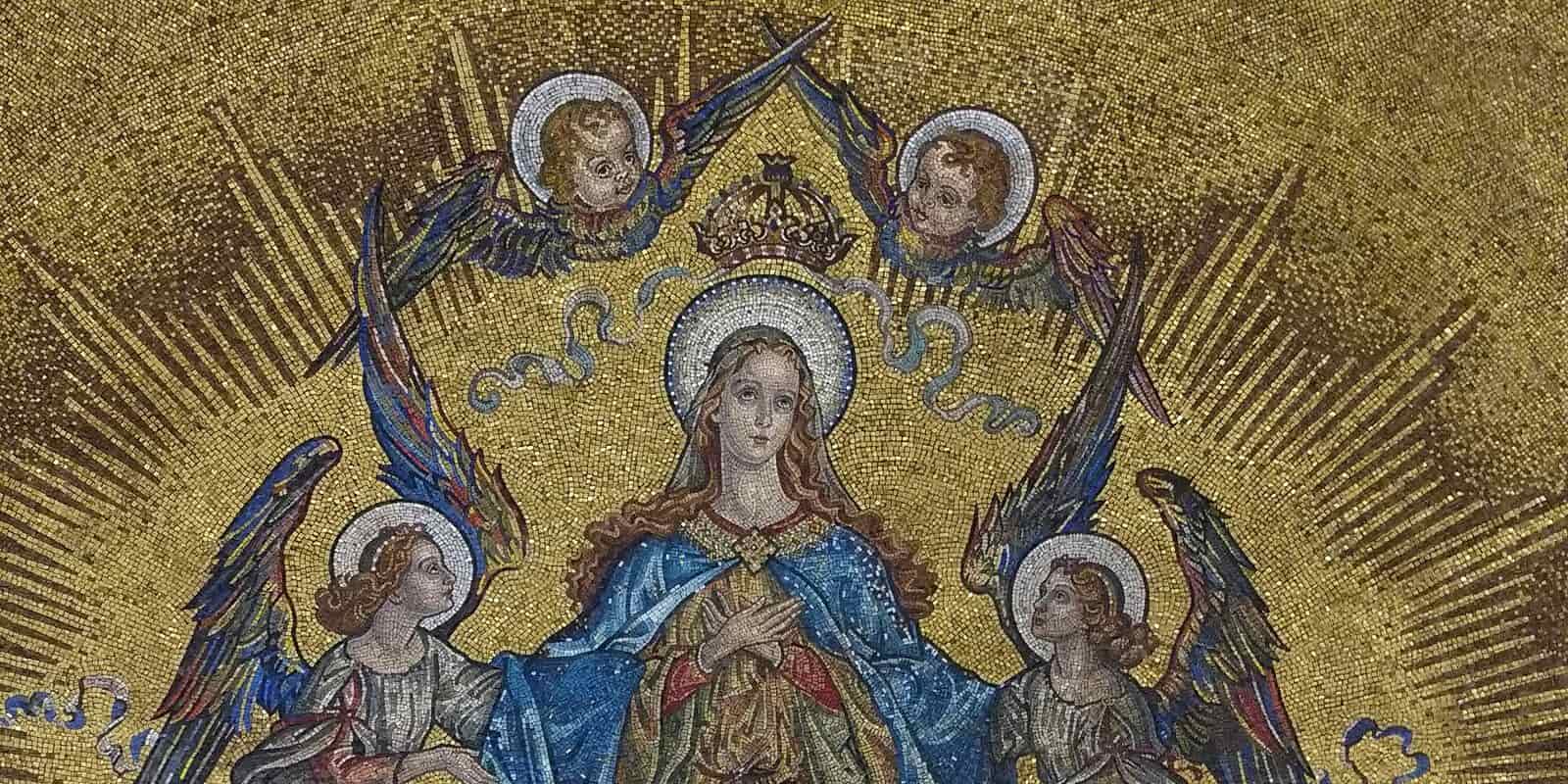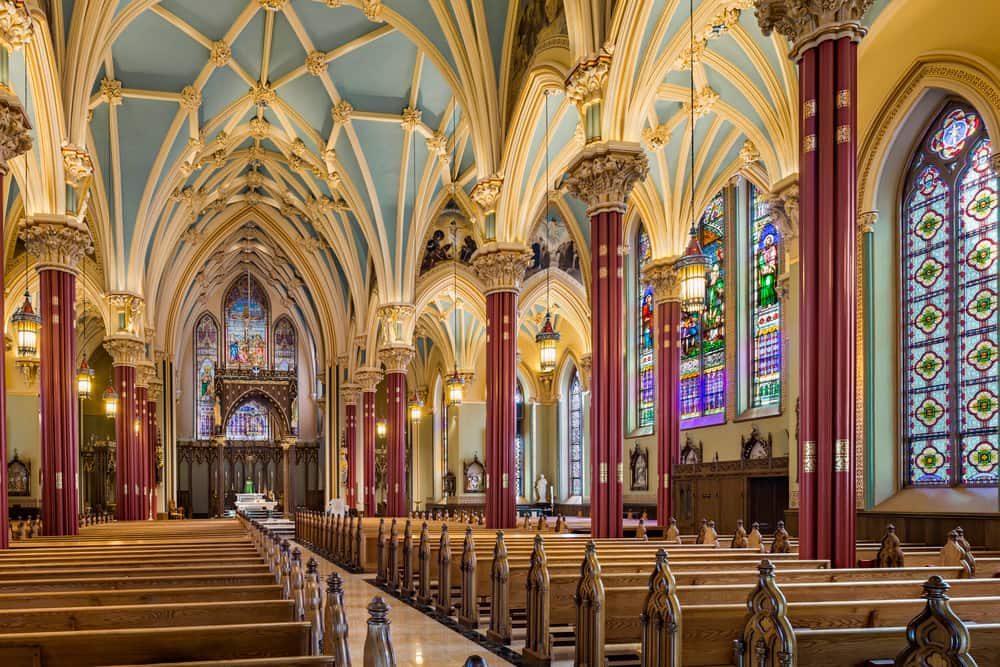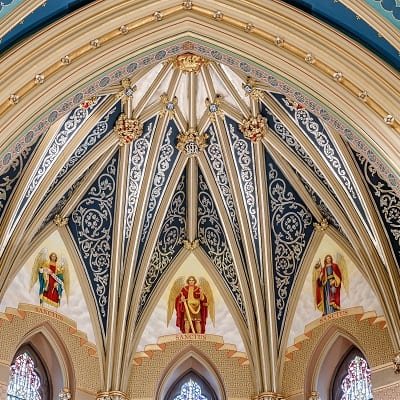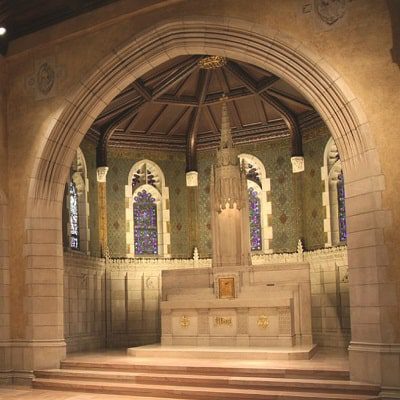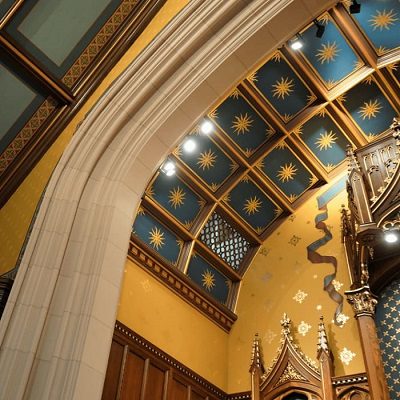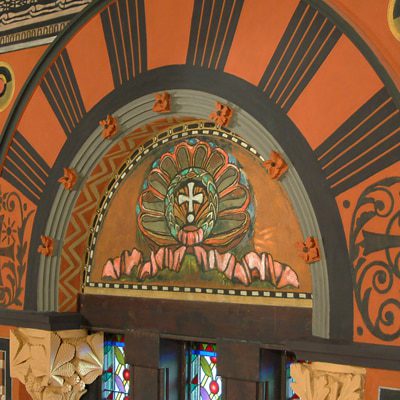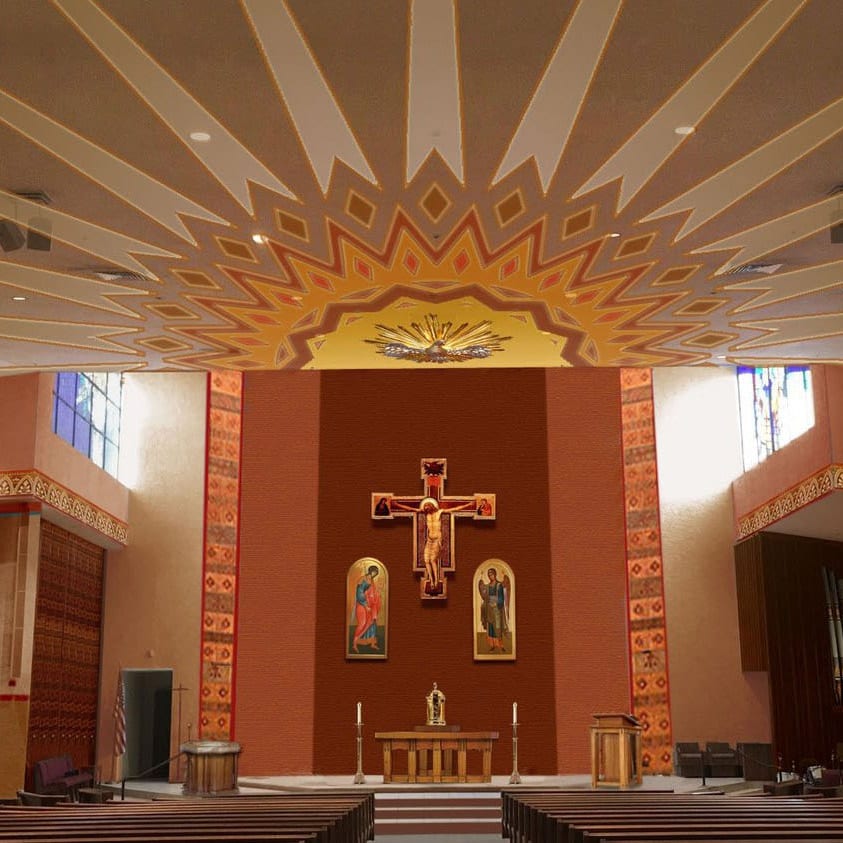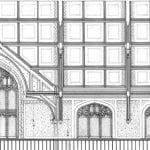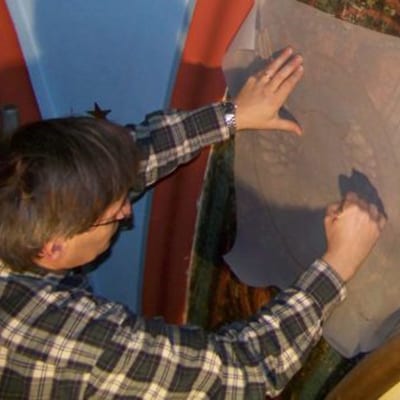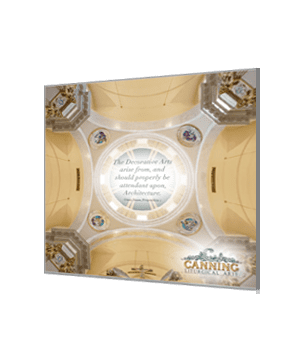The tides of history bring us once again to the final battles in a war on beauty.
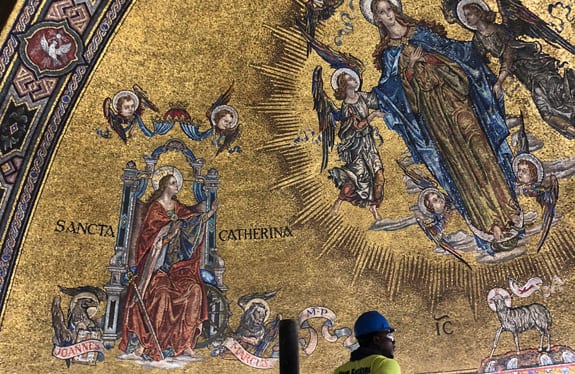

As church decorators by profession we have found ourselves involved in a surge of growing interest in the beautification of church interiors. As our culture makes a return to beautiful religious art and architecture, we are prompted to ask the question, as any proper historian might, has this happened before?
Many famous Roman poets equated the decline of the society to the conditions of religious buildings. Eloquent passages in ancient history paralleled the fall of morality and the dire straits of civilization. For example, in Horace’s Sixth Ode to the Romans, he laments the loss of morality and the neglect of sacred buildings. The Ode begins as follows:
Thou shalt atone, O Roman, for the sins of your ancestors, though innocent, till you shall have repaired the temples and tottering shrines of the gods, and their statues, defiled with sooty smoke. Thou boldest sway, because thou bearest thyself subordinate to the gods; to this source refer every undertaking; to this, every event. The gods, because neglected, have inflicted many evils on calamitous Italy.
The passage was written after the battle of Actium (31 BC), a battle that definitively ended the Roman Republic giving way to the Roman Empire (See Note. 1). He informs the Romans that without the restoration of virtue and the subsequent renewal of sacred buildings, the climate in Italy will only continue to decline.
The passage also hints to the restoration of historic buildings under Augustus, however, the stern tone also leads one to believe there was still very much to be done regarding the revitalization of both morality and architecture. A status very similar to the state of our culture today.
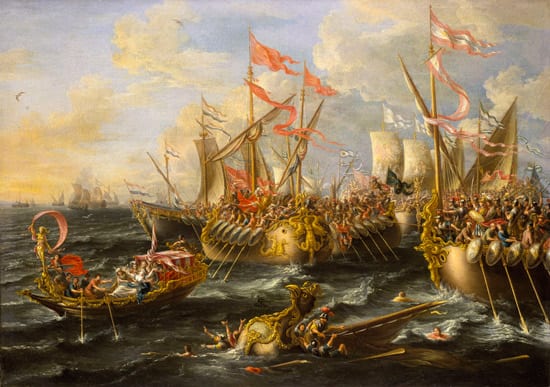

Battle of Actium by Laureys a Castro, 1672.
For many years now and for various reasons, sacred buildings have been destroyed by neglect, irreverence and ignorance similar to the evils described in the Ode to the Romans above. As symbolism and decorative paint disappeared under shades of grey, mesmerizing stain glass substituted for abstract figures, and paintings and statues simply removed, our culture was subsequently stripped of all the beauties that follow heritage, history and faith. Just as family and heritage ground us in who we are and where we came from, faith has a similar effect. One might consider
- heritage, the physical appearance of a person based on genetics, the body,
- history, how we draw connections to our past and the history of humankind, the mind
- and faith, the ever searching for purpose and direction through virtue and morality, the soul of the human condition.
Generally speaking body, mind and soul, make up the most fundamental criteria for an individual’s identity. Where one comes from, who one is, and why. Without religion, humanity is left to answer the impossible question, “Why am I here?” A question, that when left unanswered leads to despair. Thus, religion is very important to the stability and completeness of the human condition.
Plato wrote of beauty as the visual manifestation of wisdom. Since sight is the most profound sense, beauty is necessary to communicate those things unseen: wisdom, truth, faith.
For sight is the most piercing of our bodily senses; though not by that is wisdom seen; her loveliness would have been transporting if there had been a visible image of her, and the other ideas, if they had visible counterparts, would be equally lovely. But this is the privilege of beauty, that being the loveliest she is also the most palpable to sight. (Plato, Phaedrus)
Beauty is something so natural to the human person that we are drawn to it subconsciously. Human nature is incapable of fully understanding the mysteries of the heavens and without beauty to guide the heart, mind and soul, we cannot hope to find peace in a chaotic world.
The arts have always been instrumental in inspiring the individual as well as creating a bridge the past and a connection to faith, history, etc. Through beautiful music, art/architecture, and traditions, there evolves an unmatched spiritually. One might even consider such a combination with faith is the closest the common person comes to heavenly glory on earth and transfers inexplicable peace and happiness. Beauty is the vehicle to goodness, truth and faith; without it we are left without inspiration and wonder.
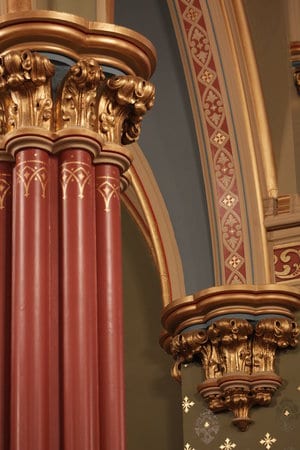

It is often said, “God is in the details.“ As artists, we attend to the visual details so that the intricacies of faith might be communicated through symbolism, artwork, and design.
We need not be so distinct in our modernity that we disregard our history rather we must understand the past to be as alive as the moment we are living in. The past created our current time and informs the future. To think we are so advanced that we need not concern ourselves with heritage, history and faith as well as the beauty and tradition that follow, is a disillusioned idea of progress.
The connection we have to beauty, history and faith is vital to the human person. Unfathomable pain is caused when such things are stripped away leaving the individual alone, to contemplate the questions of the universe without understanding his/her own past, of truth beauty, goodness, faith and some would argue, even love. There is an undisputed and innate love of beauty and we must fight for it. And so we shall defend beauty, whatever the cost may be, we shall restore sacred places, we shall conserve sacred art, we shall inform the faithful through symbolism, until, in God’s good time, tradition and beauty are rescued and liberated from the severity of modernity (See Note. 2).

